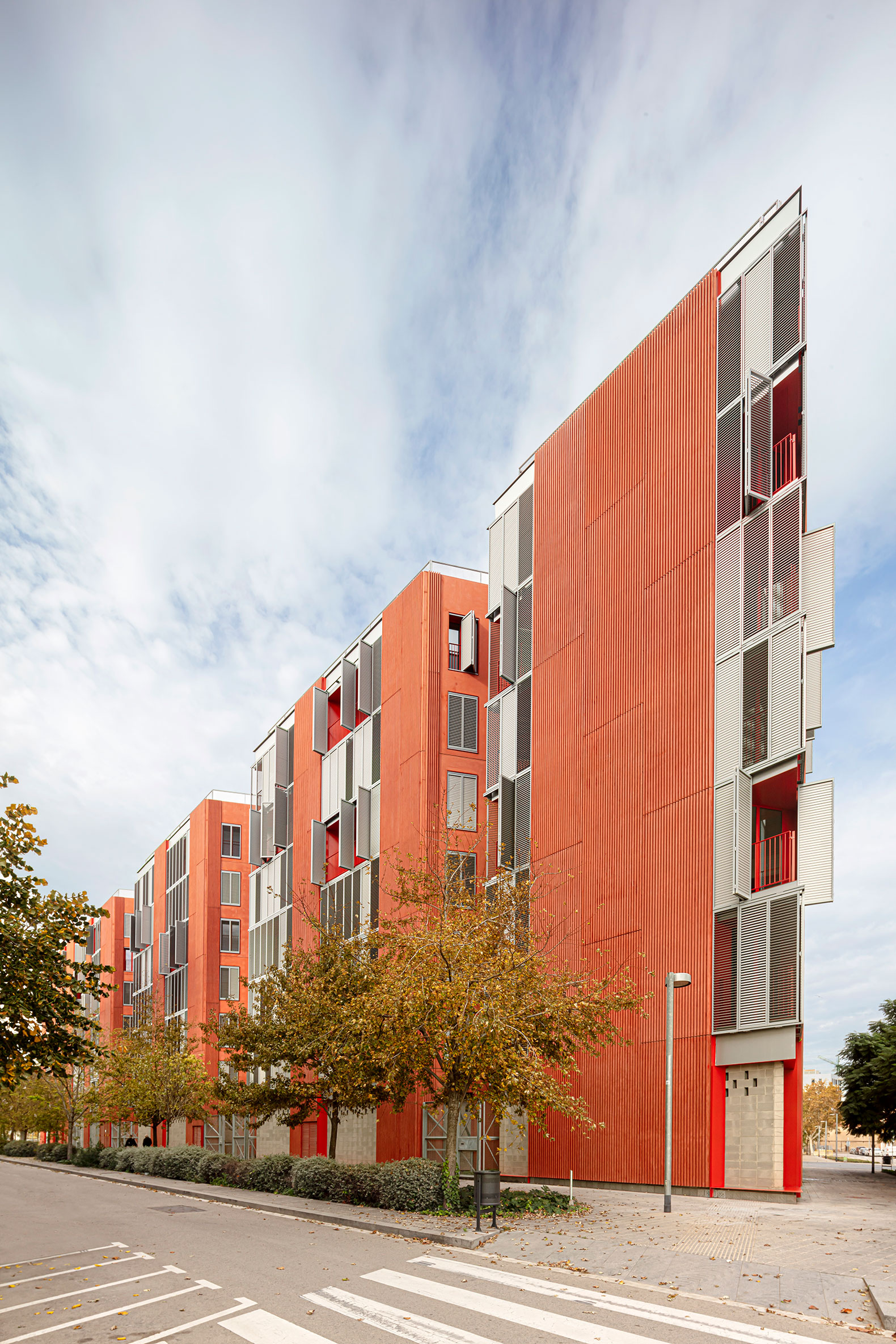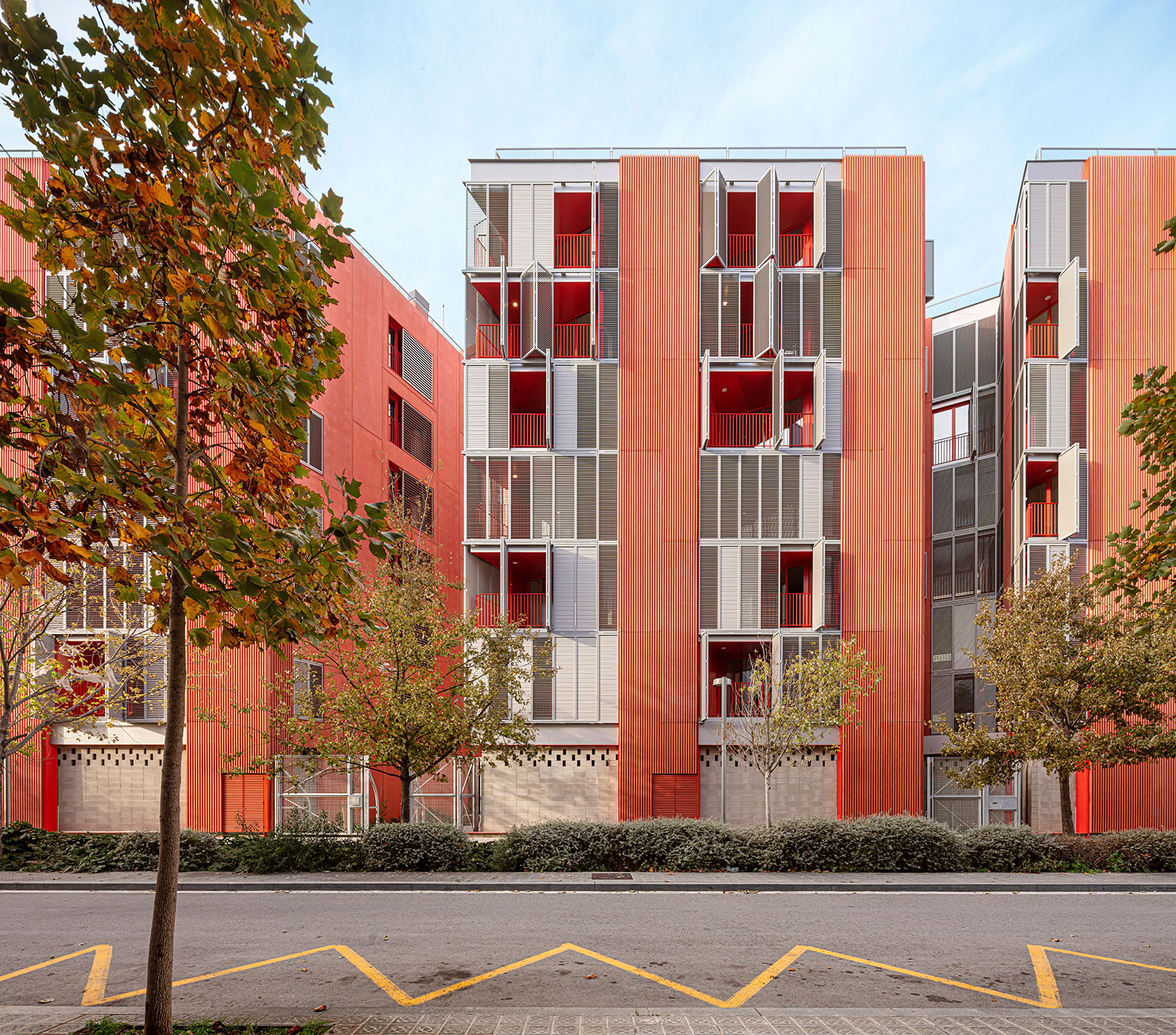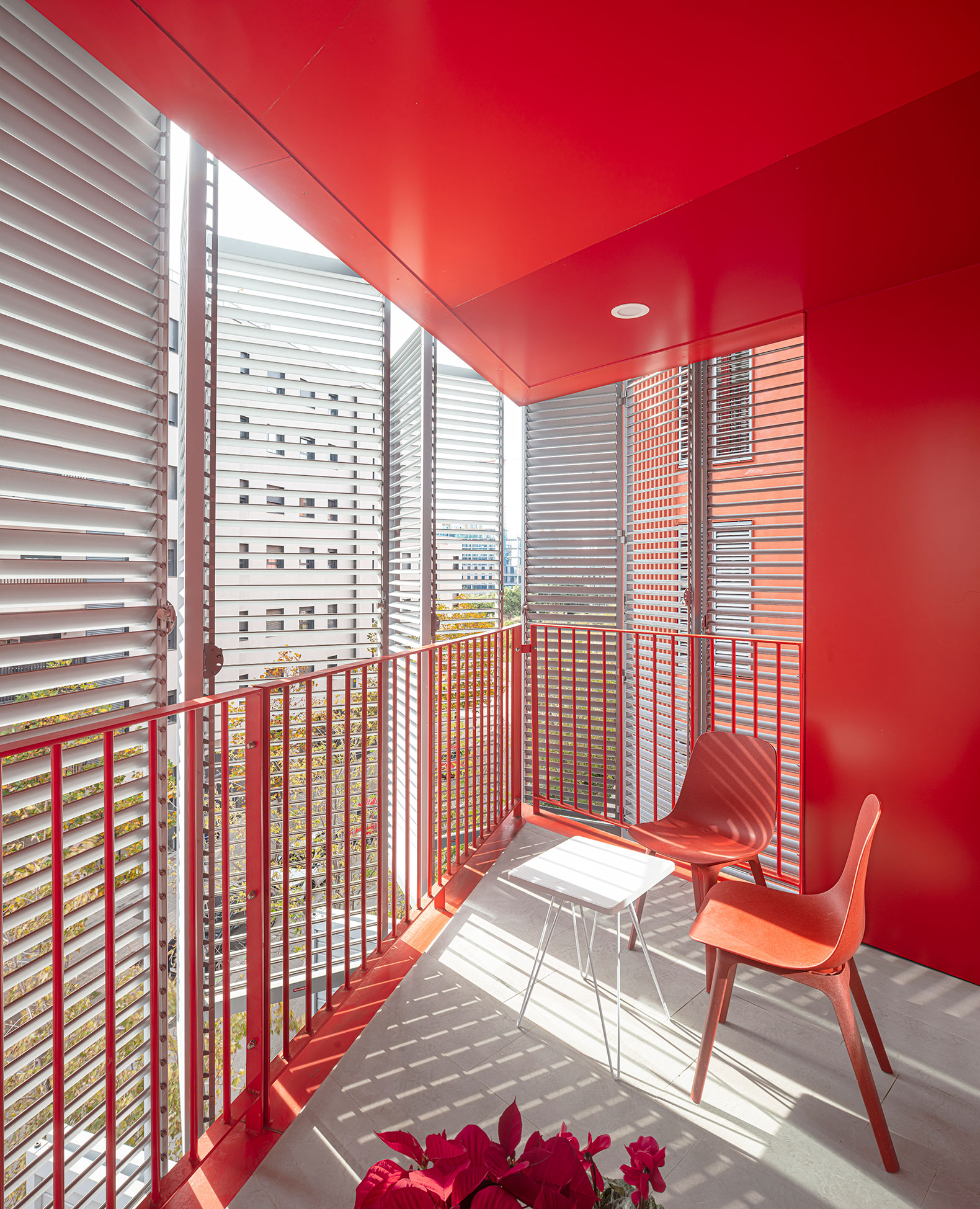The formalization of the project avoids the creation of a continuous façade of 92 meters and offers an interesting play of volumes that is resounding and at the same time sensitive to its surroundings. In addition, the project ensures that all homes have at least the two hours of sun exposure required by regulations.
The entire construction process has been very attentive to sustainability criteria that reduce its carbon footprint, with special attention to all construction details.
The recently inaugurated complex of 72 Residential Homes of the Marina del Prat Vermell, which opened its doors in early 2024, has won the prestigious "2023 Los Angeles Architecture Masterprize - Social Housing" award.

72 Social Housing at the Marina del Prat Vermell by MIAS Architects and Coll-Leclerc. Photograph by Adrià Goula.
Project description by MIAS Architects + Coll-Leclerc Arquitectos
The Marina del Prat Vermell represents a historic zone of textile colonies founded in the mid-1800s south of Montjuic in Barcelona, adjacent to the sea. The meadows were utilized for dyeing and drying fabrics, bestowing the area its moniker: "Marina del Prat Vermell," signifying the Red Meadow Marina.
The distinctive triangular parcel outlined by the streets Ulldecona - Cal Cisó - Pontils presented a unique challenge. Our strategy aimed to preserve the triangle's structural integrity while maintaining the clarity and typological rationality of the orthogonal internal arrangement of residences. The three corners of the plot remain closed, devoid of chamfers or simplifications.
To accommodate a considerable number of social housing units, each comprising two rooms and ensuring optimal conditions for ventilation, solar exposure, typology, and views, we segmented the triangle with two courtyards and two passages aligned precisely from north to south, resulting in five volumes. Distinct dwellings are situated in the eastern and western corners. Instead of opting for an interior triangular block courtyard, deemed too cramped and conducive to an excess of north-facing dwellings, we proposed blocks of four corner residences, adhering to the solar exposure regulations between 10 am and 2 pm.

72 Social Housing at the Marina del Prat Vermell by MIAS Architects and Coll-Leclerc. Photograph by Adrià Goula.
The perception of the complex varies depending on the vantage point. From the east and west corners, it appears as a unified block with crevices, whereas from the south facade, five volumes are apparent, enabling sunlight to filter through the passages at noon, preventing a continuous 92-meter facade and presenting a seamless yet delicate volume. The materialization or dematerialization of the block fluctuates based on the observer's position.
In essence, the structure embodies both compactness and porosity. Compactness is achieved through the geometric constraints of the triangle, while porosity is attained through a streamlined volume, segmented into equivalent blocks, with each floor accommodating twelve residences, all featuring a corner layout. Consequently, every unit enjoys dual-orientation, ventilation, and complete solar exposure.
Sustainability
The selection of materials strives to reduce the building's carbon footprint by utilizing lighter components and sidestepping excavation in contaminated industrial soils. We have embraced industrialization and prefabrication.

72 Social Housing at the Marina del Prat Vermell by MIAS Architects and Coll-Leclerc. Photograph by Adrià Goula.
The facades exhibit alternating vertical strips of glass and ribbed GRC (fiber-reinforced concrete), colored in red, 17 mm thick, reminiscent of folds in drying fabrics on the meadow. Positioned within 120 mm metal frames, they are insulated on the inner face for low thermal transmittance: 0.24 W/m² K. The corners are open, featuring broad terraces following the envelope's geometry, protected by Gradhermetic louvers.
The reinforced concrete structure employs a Bubble-Deck system, reducing floor slab weight by 35% and facilitating cantilevers to conform to the site's unique geometry. The Bubble-Deck comprises cylindrical bodies of recycled PVC, reducing weight and carbon footprint.
The configuration of the project, with apertures optimized for solar gain in winter and providing solar shading and cross ventilation in summer on all levels, results in a low total energy consumption of 8.76 kWh/m² per year, with an A Rating and adherence to Passivhaus standards, demanding minimal heating and cooling.
The underground biomass network by Ecoenergies liberates the roof space for a shared solar photovoltaic production plant, featuring 89 modules generating 37.8kWp, covering 51% of consumption.
Greenery is integrated on remaining roofs, and flowerbeds line the access passages with red flowering species to promote biodiversity and alleviate the heat island effect. Additionally, bike racks are installed in these passages to encourage alternative mobility.














































